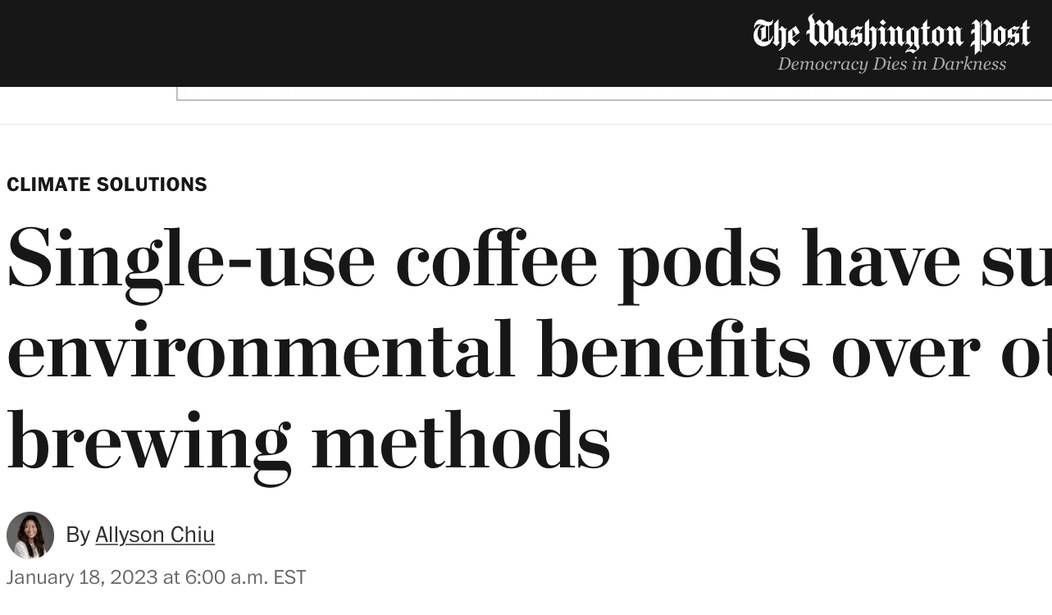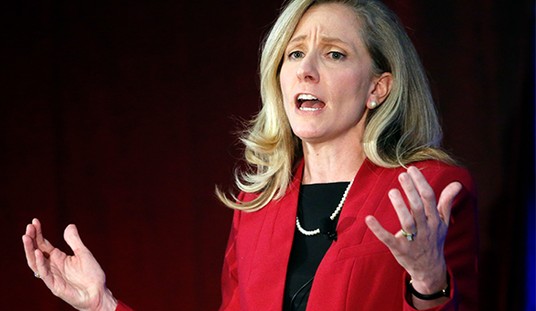Now here’s a take I never expected: drinking coffee made from single-serve pods like Keurig machines is good for the environment.
No really, that is what I just learned!
I have owned and used a Keurig machine, although I finally gave it up because the coffee really isn’t that good. My preferred way of making coffee is with a professional espresso machine I bought a while back, but the thermostat or heating coil broke a long while back and I just dread getting it fixed. It weighs a zillion pounds and it will cost hundreds to repair.
So I make pour-over coffee, which is adequate I guess. But a nice morning cappuccino from a superb machine is optimal.
One minor benefit of Keurig, though, was that using it annoyed the environmentalists. Those folks who love reusable (and incredibly gross, germ-filled) grocery bags just hated the single-use K-cups. It made me smile smugly thinking that I was annoying them.
The secret to the green benefits of pods? Climate change. It turns out that pods are less carbon-intensive than pour-over coffee.
While convenient and popular, single-use coffee pods are viewed by many as an environmental nightmare. But despite the piles of discarded capsules this brewing method leaves behind, it might not be as terrible for the planet as you think.
In some cases, brewing a cup of joe in an old-school filter coffee maker can generate roughly 1½ times more emissions than using a pod machine, according to an analysis by researchers at the University of Quebec at Chicoutimi in Canada.
The study adds to a growing body of research that shows assuming packaging does the most harm to the environment is often misguided. Instead, experts say, it’s important to look at a product’s entire life span — from the time it’s made to when it hits the landfill — to figure out which changes might have the biggest effect on improving sustainability.In the case of brewing coffee at home, this latest study shows that it largely boils down to not wasting water or coffee.
Actually, that makes sense in an odd sort of way, and should equally annoy the greenies who love to complain about the packaging. When I make coffee I boil more water than I use, although I waste no coffee because I make each cup individually. But if you make a pot, you boil a lot of water and often wind up making more than you drink.
“As a consumer, what we’re left with is the visible waste in front of us, and that often tends to be packages and plastics,” said Shelie Miller, a professor of sustainable systems at the University of Michigan School for Environment and Sustainability, who was not involved in the new analysis. “But the impact of packaging, in general, is much, much smaller than the product itself.”
I have to admit that it pleases me no end to have a greenie finally admit that the war on packaging is BS. Good packaging is great! Crappy packaging sucks. Environmentalists focus so much on visible waste because it offends them aesthetically to see it. Often it is benign.
Except for blister packs. Those things suck.
It is music to my ears to hear leftists say things like: “don’t fixate on packaging,” because it will annoy other lefties who love to virtue signal–display their environmental bona fides by doing something everybody can see.

How can a greenie explain to her companion that using a K-cup is ACKSHUALLY better for the environment than something else? It can’t be done. It is counterintuitive, even if true.
Obviously, I don’t care a whit about this, because it is very low on my moral radar. I am not interested in despoiling nature or anything like that, but the carbon footprint of my cuppa just doesn’t matter to me. I just want it to be good.
Now I best get that cappuccino machine fixed. At 1800 watts it will emit more carbon than my pour-over, and that will please me no end.








Join the conversation as a VIP Member